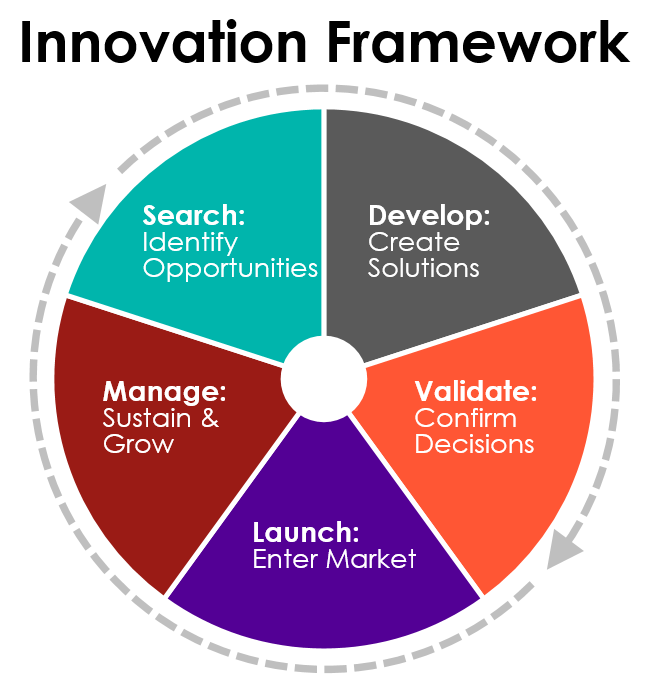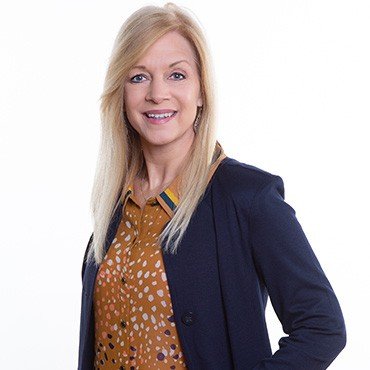
Part Three of Our Five-Part Guide to Successful Innovation
This is the third post of a five-part blog series about how businesses can innovate and adjust to market change using a five-phase framework for innovation. We break down one phase per blog, laying out the business challenges that typically align with each phase and the various ways to address them. First we explored how to identify areas of opportunities in the Search phase. We then delved into how to generate ideas and develop concepts of relevant solutions in the Develop phase.
The second phase of the innovation process, Develop, produces innovative concepts for possible products and services. However, this doesn’t mean that a new concept will necessarily translate into market success just because it is “innovative.” So, you might now be wondering how to determine if a potential product or service will be a hit—or a flop.

Phase Three of Innovation: Validate—Confirming Decisions
This brings us to the third phase, Validate. Here, the goal is to determine which concepts are winners, which ones require further development and, if so, in what ways the concepts would need to be improved to be a success. Of course, not all ideas are good ones, so some may need to be tossed out.
If you are asking these types of questions, you are in the Validate phase of the innovation journey:
- Does the new product or service we designed achieve the goals and deliver the value we are seeking to provide our customers?
- How does the new product or service we developed resonate with consumers?
- How do we test the new product or service to make sure it hits the mark with consumers?
- What are the best ways to refine or adjust our new product or service for maximum success?
Here are some Validate phase issues our clients faced and how we helped them gather the data and insights necessary to confidently confirm which products and services have the best shot at success.
Example #1: Testing a New Human Machine Interface to Ensure a Delightful Customer Experience
An original equipment manufacturer sought to create an extensive new user interface system in its vehicles that would be intuitive, visually appealing, functional and easy to use. The manufacturer developed a new design that encompassed menus and information in the instrument panel and center displays, along with controls on the steering wheel and center console. The manufacturer then asked us to evaluate and determine if the newly designed human machine interface (HMI) achieved its goals.
To do so, our highly experienced user experience researchers put the new HMI system to the test with consumers in a static environment to better understand how intuitive and functional the system was. We recommended multiple design updates based on the consumer insights we gathered, which our client integrated into the development process of the new interface. As our client fine-tuned the design, we tested it multiple times and worked closely together on refining details to ensure a great experience for customers. Once satisfied with the new system, the manufacturer rolled the HMI into production and continued to survey customers when the product was on the market to ensure its new HMI was hitting the mark. The result? An overwhelmingly positive response, with buyer surveys confirming an “excellent” owner experience.
Example #2: Establishing the Value and Priority of New Concepts with One Easy Excitement Score™
Seeking to distinguish itself from the competition, a major smartphone manufacturer identified a whopping 22 innovative features it could build into its next generation of phones. The company turned to Escalent for help in evaluating and prioritizing these features for further development.
To avoid the “analysis paralysis” that comes with comparing multiple metrics across 22 concepts, we applied Escalent’s proprietary Excitement Score™ methodology, which is extremely efficient at identifying the feature or features that generate the most enthusiasm from consumers and have the most promise in the market. Excitement Score uses key driver analysis to combine various metrics into a single value for each concept. This allowed us to reduce the potential 154 data points to 22 Excitement Scores. As a result, our client had a clear understanding of the value of each feature and knew—at a glance—which concepts were worth developing.
As a bonus, our client now has its own database of concepts against which it can benchmark future concepts.
If you have some great ideas to help your business grow but want to test them before you go to market, you are in the right place. Escalent has multiple tools and services to help any business put its ideas to the test. We will hone in on your best ideas so you can feel confident in your investment.
Next: We show you what you need to think about and do before you push a new product or service into the market in the Launch phase. Now that you know what you want to do, it will be critical to put the right promotions and resources in place to position your product or service for success.
To learn more about how Escalent can help you innovate, send us a note.










